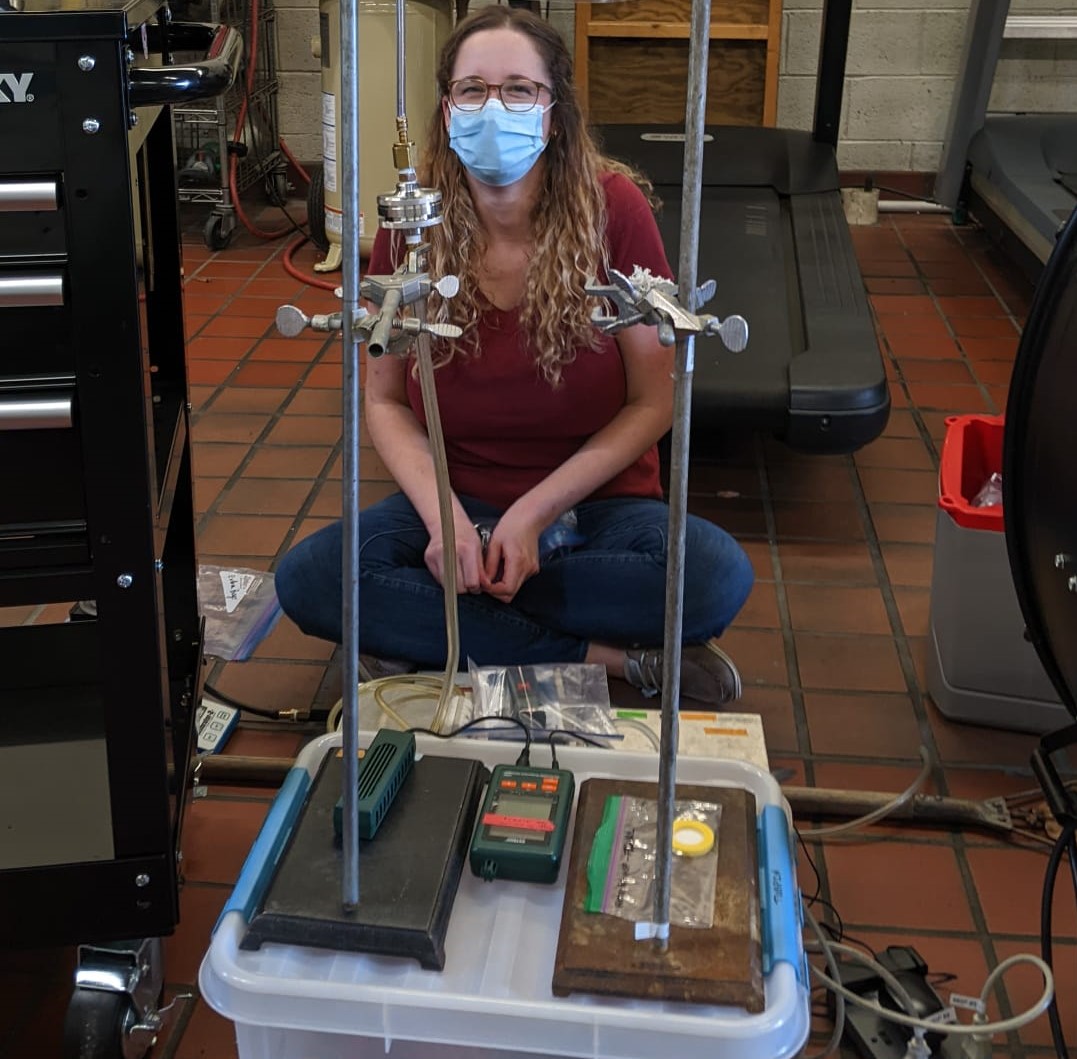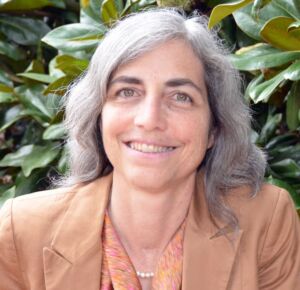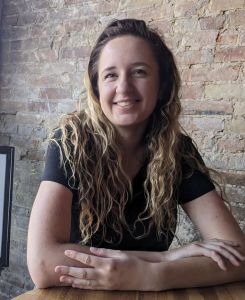Gabrielle West Earns National Recognition for Research on Firehouse Air Quality

In her study, Gabrielle West, a Ph.D. student in the Department of Chemistry, measured PFAS in three North Carolina firehouses, collecting samples from the living spaces and the apparatus bays. She looked at airborne PFAS in two forms: gases floating in the air and tiny particles called PM2.5. She also sampled dust and surfaces like cloth and glass.
November 6, 2025 | By Dave DeFusco

Gabrielle West, a Ph.D. student in the Department of Chemistry at the University of North Carolina, recently received a certificate of merit from the Environmental division at the American Chemical Society (ACS) Fall 2025 conference in Washington, D.C. The award, given to students and postdocs delivering their first presentations in the division, recognizes the quality, creativity and potential impact of their work on environmental chemistry. For West, it was a moment of honor and a validation of a project she’s passionate about: measuring airborne chemicals in firehouses that could affect the health of firefighters.
West’s research focuses on a group of chemicals called per- and polyfluoroalkyl substances, or PFAS. These substances have been used for decades in everything from nonstick cookware to firefighting foams and protective gear because they resist water, grease and heat. But while PFAS make firefighting materials effective, they also pose a potential health risk to the people who use them. Studies have shown that firefighters often have higher levels of PFAS in their blood than the general public but until now, no one had carefully studied the air inside firehouses.
“I wanted to look at the air that firefighters breathe while on duty,” said West. “We know they have elevated PFAS levels in their blood, but it’s important to figure out how they’re getting exposed. Indoor air might be a significant source, separate from diet or direct contact with contaminated gear.”

In her study, West and her team measured PFAS in three North Carolina firehouses, collecting samples from the living spaces and the apparatus bays. They looked at airborne PFAS in two forms: gases floating in the air and tiny particles called PM2.5. They also sampled dust and surfaces like cloth and glass.
The process was meticulous. For gas-phase PFAS, West used special cartridges filled with resin and foam that trap chemicals from the air over several days. For particulate matter, she captured tiny airborne particles on quartz fiber filters, focusing on the ones most likely to reach human lungs. Back in the lab, she analyzed the samples using advanced instruments that can detect even tiny amounts of dozens of PFAS chemicals, including fluorotelomer alcohols, perfluorocarboxylic acids and the widely known GenX compound.
West expected the levels in firehouses to be much higher because of all the specialized gear and firefighting foams, but what she found surprised her. “They were actually pretty comparable to what we see in homes in the area,” she said. “That was really good news. It suggests that the air firefighters breathe on duty might not be as big a contributor to their overall PFAS exposure as we feared.”
Still, her measurements revealed subtle differences between spaces. In living quarters, one type of chemical called 6:2 fluorotelomer alcohol was more common while in apparatus bays, 8:2 fluorotelomer alcohol dominated. Additionally, fluorotelomer acrylates were detected more frequently in the apparatus bays, hinting at potential sources of exposure that warrant further study.

By sharing her findings with fire chiefs and firefighters, West hopes her work can inform better practices in firehouses. “They’re already careful about keeping contaminated materials out of living spaces,” she said, “but some fire departments are designing new buildings and considering ways to segregate gear or improve air ventilation to further limit exposure. That’s exciting to me because it shows how research can directly improve public health.”
The project also gave West a unique interdisciplinary experience. Working under Barbara Turpin, lead PI of the study and a professor in the Department of Environmental Sciences and Engineering in the UNC Gillings School of Global Public Health, and Jason Surratt, co-PI of the study and Cary C. Boshamer Distinguished Professor, she learned to combine chemical analysis with environmental engineering principles.
“Jason brings a chemist’s perspective, and Barb brings an engineer’s view,” said West. “Having both approaches shaped the way I design experiments, collect samples and interpret results.”
Looking forward, West is eager to explore unanswered questions, particularly the potential role of firefighters’ turnout gear in releasing PFAS into the air. She also hopes to continue bridging chemistry, environmental science and public health, applying her research to improve safety for firefighters nationwide.
“I’m really proud that my work was recognized by the ACS,” said West, “but more than the award, what excites me is knowing that this research can make a real difference in people’s lives.”

